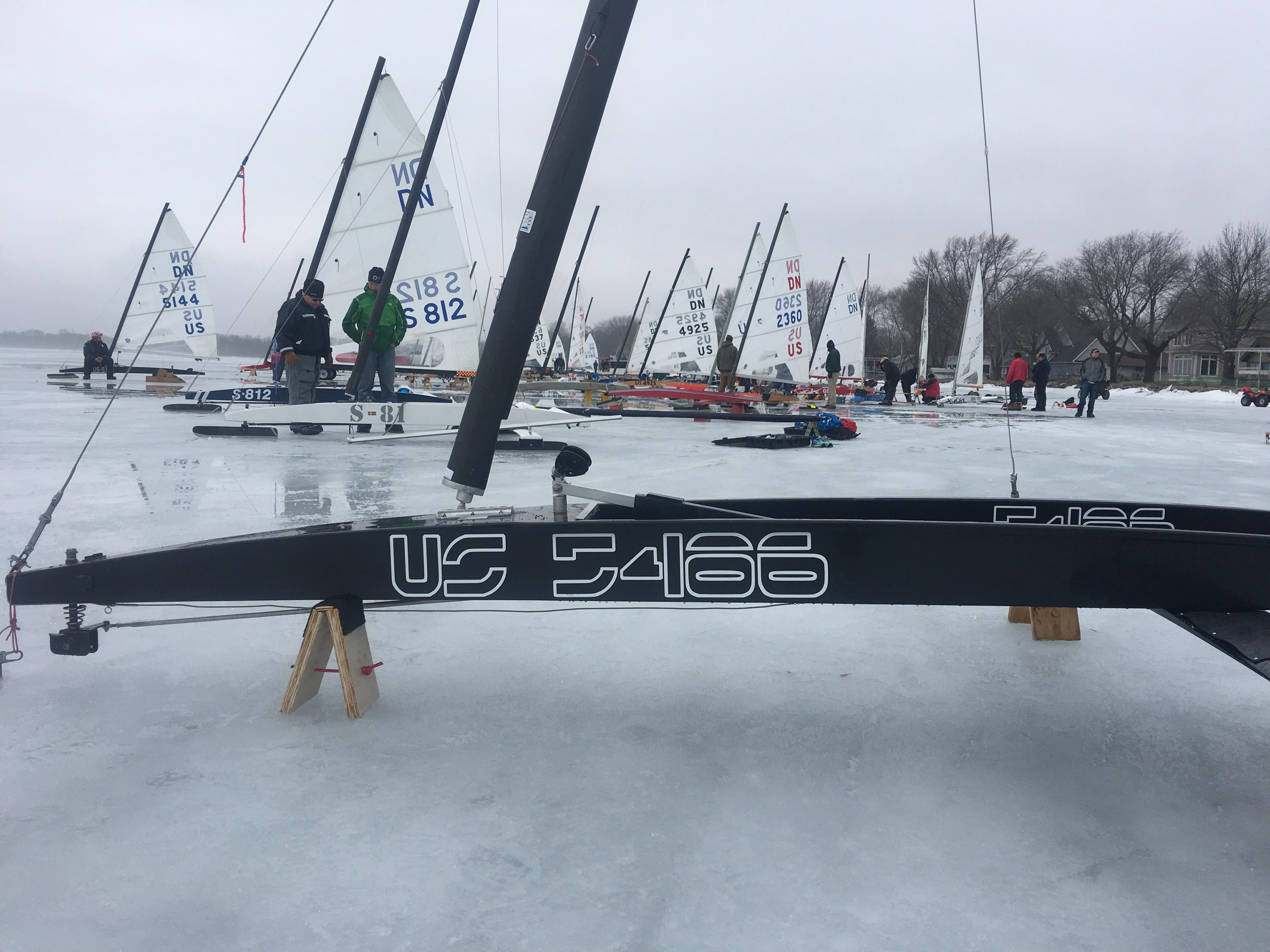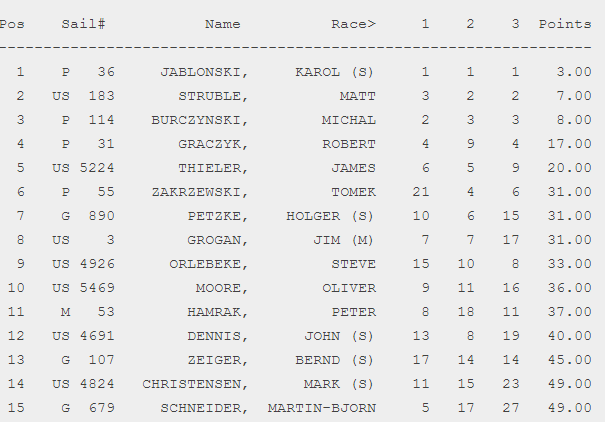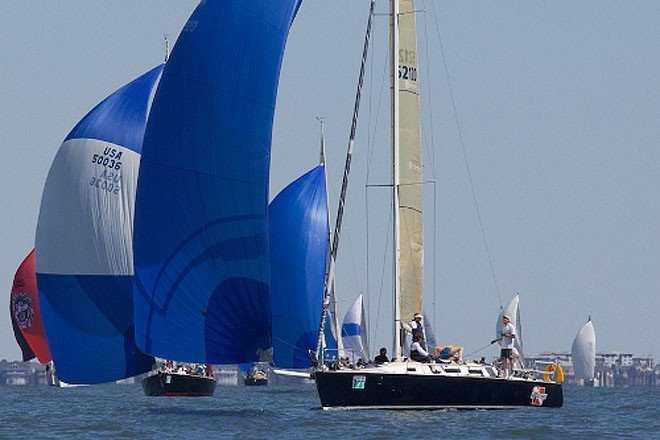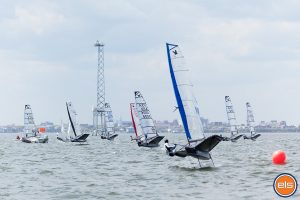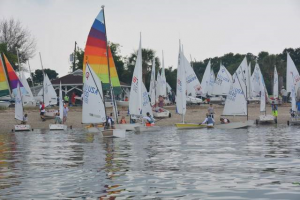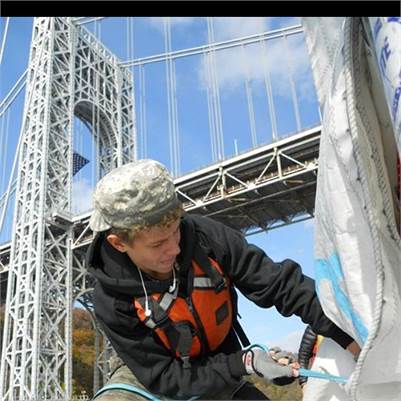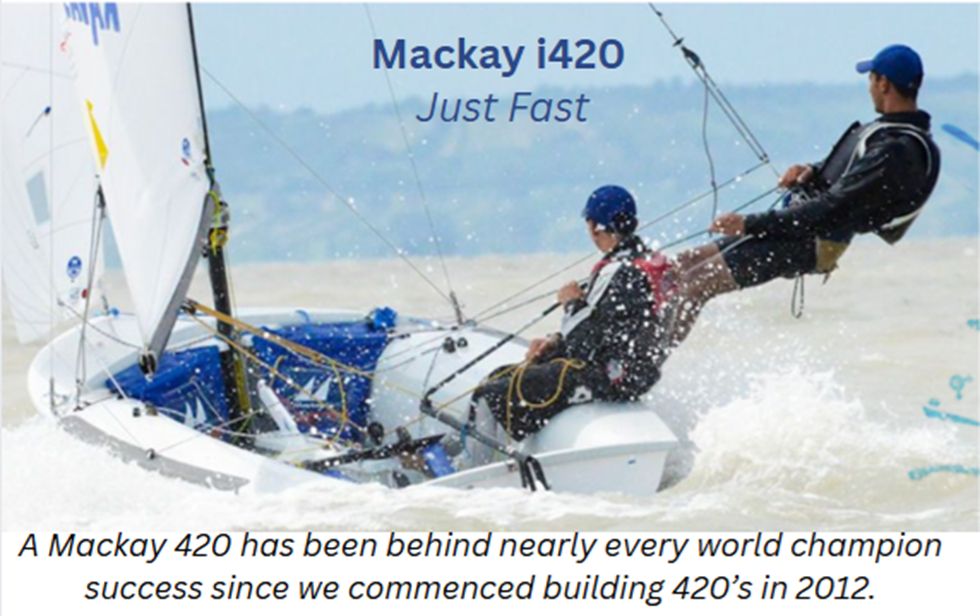PRES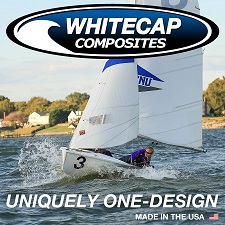
Whitecap Composites is pleased to announce that we have been granted a builder’s license from the Club FJ Class Association. A boat had been sent to the US Sailing Center in Long Beach, CA for measurement. It was also sailed in a number of regattas to evaluate its performance.
We look forward to being involved in the future of the class for many years to come.
Whitecap Composites Inc.
Whitecap Composites, Inc. is a team of passionate sailors, racers, and boat builders. They began their business back in 2011 when they were approached by a number of institutional coaches who felt collegiate racing would benefit from boats with improved structural integrity, a higher level of consistency, and a more performance-oriented feel. Whitecap Composites has the flexibility to incorporate any custom requests into their boats as they have learned that individual groups use their boats differently.
Currently, Whitecap Composites builds collegiate boats including the collegiate FJ, 420, Tech Dinghy, and the Lark. Now, with this new builder’s license, they will be building Club FJ’s. We talked with Paul Zimmerman from Whitecap Composites for a little Q and A on this new venture.
Why did Whitecap want to start building Club FJ’s?
First, we would like to clarify the difference between the Club FJ and the Collegiate FJ. The Club FJ must adhere to a specific set of class rules which define physical measurements, overall weight, and construction materials. Whereas the collegiate FJ can include features specific to a customer’s requirements and can be built to withstand a higher rate of collisions that the boats are subjected to in a college environment.
Now to answer your question, Whitecap Composites was initially approached by a number of schools to develop a lighter, stiffer, and more 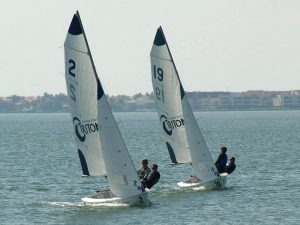
We felt that the West Coast market which predominantly sails the Club FJ could also benefit from what we had developed for other fleets in the country. So we applied what we learned with the Collegiate FJ to meet the specifics of the Club FJ class rules which addresses weights, hardware locations, and construction materials. The Class Association was very receptive to the possibility of a new builder and accepted our request to present a boat for their consideration.
Are you going to do anything different to make the Club FJ stand out from other boat builders?
In addition to the technical aspects, we wanted to provide a service that was attentive to the needs of schools and programs that require a quick response to all aspects of delivering new boats, including service after the sale was made and the boats were delivered. The number one goal is to keep the boats on the water sailing and not out of service.
Are there any clubs, teams, sailing centers interested in buying Club FJ’s from you already?
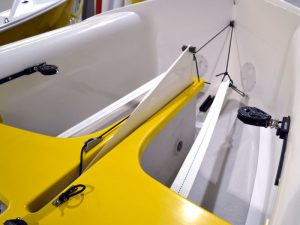
For more information on Whitecap Composites check out their website: http://www.whitecapcomposites.com/index.php And for questions regarding the new Club FJ’s they will be building Contact Paul Zimmerman at [email protected]
Blog
2017 DN World Championship Report & Results
On January 20th, 108 sailors from eleven different countries still had no idea where in the Western United states they would race the 2017 DN World Championship, set to begin in two days.
“Welcome to Iceboat racing!”
An unseasonably warm weather pattern overtook the Midwest and turned most of the frozen lakes in the region to mush a week before the event was set to begin. Most iceboaters pray for a late January rain, we call it the Great Zamboni, but nobody likes to see three days of rain and seven days of temperatures in the mid-forties before a big event. Warm rainwater creates huge holes in the ice and turns the surface into a slushy, wet mess. It’s the equivalent of racing F1 cars on sandy track littered with potholes big enough to pull off tires. DNs thrive in a frictionless environment, but when pushing through soft ice, things get real slow, real quick.
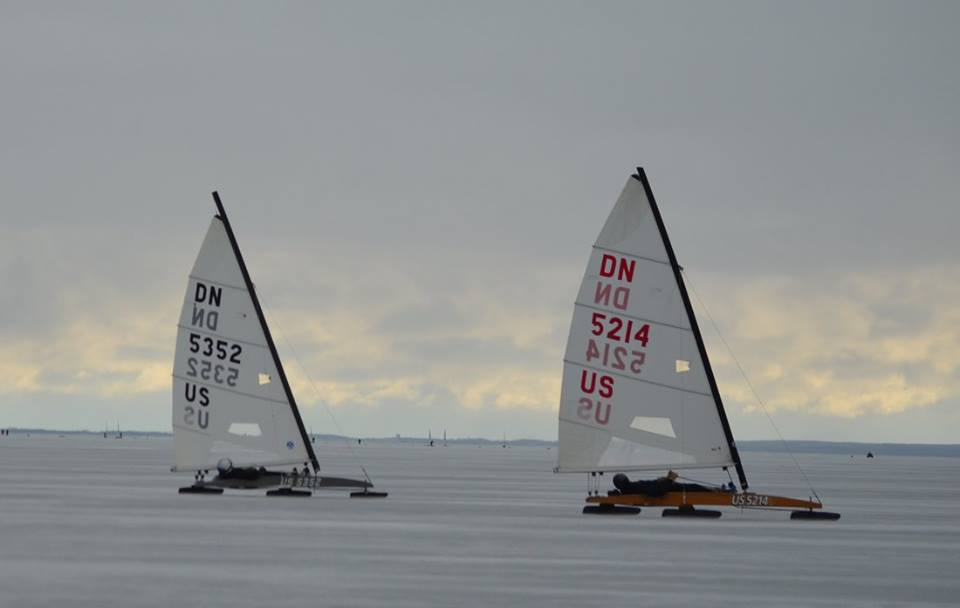
If you find yourself unfamiliar with the humble little DN (Detroit News), don’t worry. Most of the sailing community hangs up their sails for the winter and finds something warmer to do. For those of us that iceboat, we often find ourselves referring to summer racing as a way to pass time until we can get to ‘real’ sailing. The DN is a wooden, 12ft long, 100-150lb, DIY developmental class designed to hurtle a sailor around the ice at speeds up to 60mph (2-4 times the average windspeed). This community of competitors is filled with some of the most technically minded sailors in our sport. Names like Harken, Struble and Gougeon (West System Epoxy) permeate the sport’s history. Each home-built boat has its owner’s unique interpretation of go-fast techniques much like the Moth, 505 or A-class cat fleets. Sailors spend hours honing the runners (skates) to achieve optimum profile for the ever-changing ice condition. They constantly adjust settings to make the boat bend and respond to changing conditions. Unlike soft-water boats, where you can adjust most settings on the fly, DN racers only have a mainsheet and tiller once they leave the starting blocks. If the boat is set up too stiff it can be a wild ride, if you play it safe and sail the boat loose, you find yourself lacking enough power to keep up. It is without question the development-based culture of this design and thrill of the speeds that keeps sailors coming back year after year. Why else would somebody travel thousands of miles (from as far as Russia) to freeze their butts off on a frozen lake for a chance, and I stress the word chance, to get a couple races in?
The night of the 21st, sailors collected at a local DN racer’s business for a meet and greet, skippers meeting and the ceremonial singing of National Anthems. Sailors laughed and cheered as competitors sang their hearts out in a show of pride and community. It was refreshing to see such camaraderie between sailors from such vastly different cultures and communities.
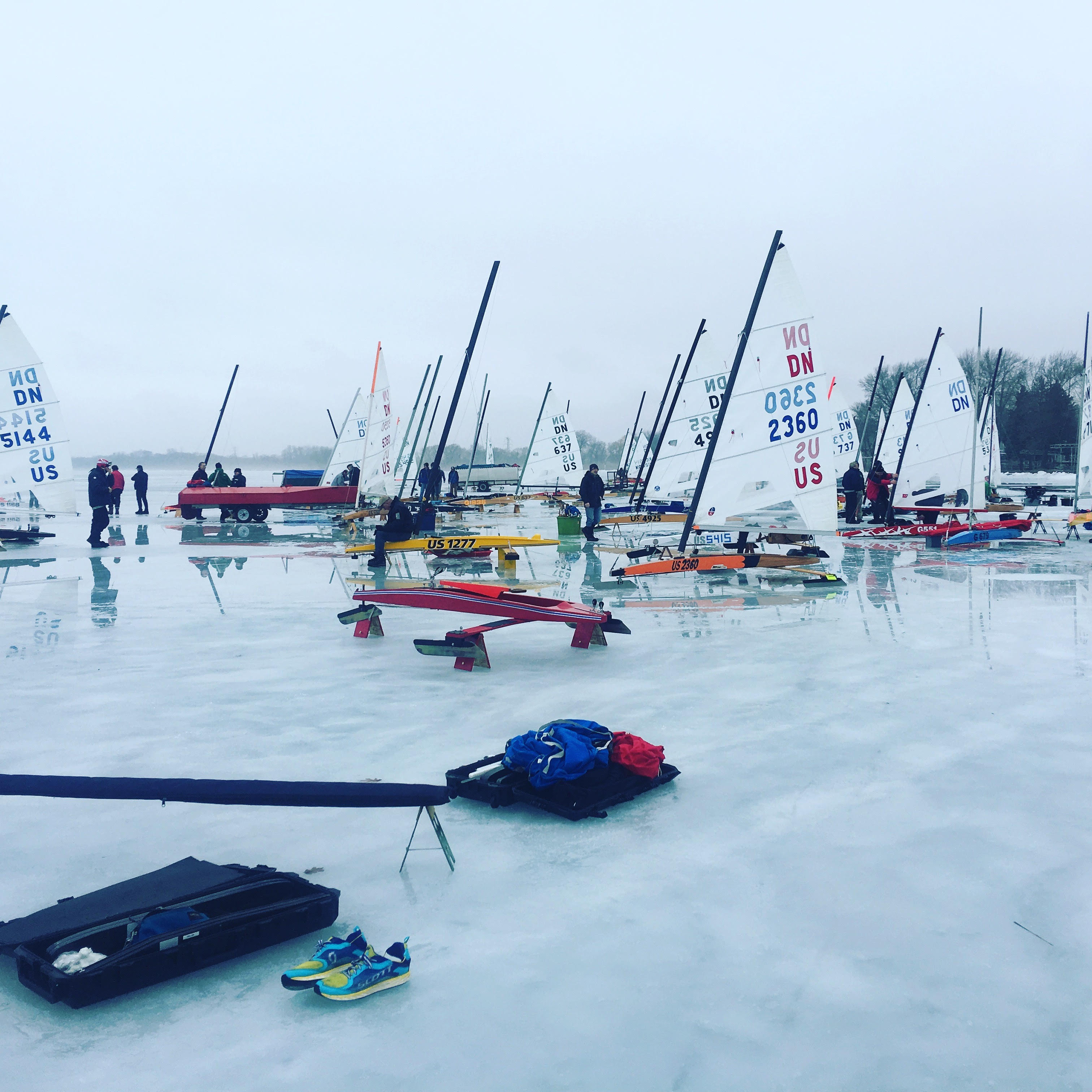
The first three races of the day were qualifiers for Gold, Silver and Bronze fleets. Those whi have a lower international rank have to sail hard to qualify for Gold fleet. After everyone is seeded the race officials initiate scored racing. The regatta is considered complete at three Gold races with no more than seven races per fleet to be sailed during the event. A forecast of light air and potential snow over the next three days meant that there was little time to fix boatspeed problem. Each sailor knew the winners could very well be decided by the end of the day.
The first race of the day was sailed in sub-optimal conditions for high speeds. In six knots of breeze the Gold fleet left the line for a three lap race in intense, challenging conditions. Those that spent the extra time with their alignment and runner selection immediately showed speed. Sailors that were able to sail around the slush (much like big waves) and keep the boat going were able to stretch their legs and extend. The rest of the fleet piled into the first mark as best they could but a huge, soggy patch at the windward mark made transitions to the downwind challenging. Boats that could carry speed through the turn would make gains on the downwind, those that tacked short of the layline paid a terrible price. Carol Jablonski, from Poland, was first around the windward mark and he never looked back. The ten time world champion put together the perfect picket fence and ended the day with a four point lead on Matt Struble. Silver fleet sailed in similar conditions, but the top sailors in each race swapped a significant amount more than was usual. A local sailor, Tim Sugar, was able to string together two wins in race three and four ending the day tied for first. Bronze fleet sailed most of their races in the lightest winds of the day splitting the fleet into those who could get top ten finishes and those who couldn’t. By the end of the third race, Chad Coberly held a three point lead on second place before the sun got too low to continue racing.
The second day of the event was forecasted to be quite light and in a rare show of skill, the weathermen were right. Sailors walked their boats out to the starting line and waited for any sniff of breeze to try new settings. A sucker puff would show up every hour or so and cause a flurry of movement, but by 3:30pm it became clear sunset was going to be the only event of the day. Sailors packed up and made the long walk back to the staging area, pushing or pulling their boats along. The fleet derigged in the pits and sailors walked around sharing beers and jokes. You can’t bring this fleet down.
The forecast for day three was punctuated by a thick coat of rain and snow, followed by more light air. During the night, Madison saw 4-6 inches of heavy snow as the fat lady belted out her best. There would be no suitable lake in the Madison area and little possibility of race-worthy ice in the greater Midwest. Event organizers sent racers to several different lakes on the outskirts of the weather system to test sail whatever they could find. Meanwhile, competitors packed up and traded stories at a local bar that became the event’s unofficial home base. By mid-day, it was clear that no lake within one day of travel was suitable for further racing and it was announced that the 2017 DN World Championships was concluded. Not one person expressed dissatisfaction and you could see, it was smiles all around. The heart of an iceboater hopes for the best but accepts the worst. Each race sailed was fair and well-run; the fleet was happy.
Congratulations to Carol Jablonski for winning Gold Fleet for the 11th Time, Tim Sugar for 1st place in Silver fleet and Chad Coberly for a convincing win in Bronze Fleet. Full results HERE
Two days later the same fleet of sailors, including most of the international competitors, descended on Peshtigo, Wisconsin to do it all again for the 2017 DN North American’s. Nothing can crush the spirits of these sailors. The ride is too good, the community is too strong and there is always better ice around the corner.
Results, pictures, video and more information on the Class or event can be found on the DN North America website NA.IDNIYRA.org
Club Profile: James Island Yacht Club
By Airwaves writer Taylor Penwell Brought to you by: SELDEN & KO SAILING

The club started as part of an agriculture society in 1895 and raced their sailboats against other surrounding islands in the Charleston area. The club was officially incorporated in 1905. The club has an equal share of sailors, powerboat enthusiasts and fishermen. With Charleston becoming such a popular moving destination the JIYC has seen a large influx of membership applications, which is always a good sign for a club.
The many great activities at the JIYC include fantastic sailing with regular year round racing, a summer junior sailing program, fishing clubs and tournaments, and community charities. There is a playground for children, mutual use grills, small beach area for relaxing and launching boats, and of course a bar that is open year round.
The sailing race scene is competitive with many highly awarded sailors calling the club their home. Racing includes PHRF, a frostbite series for Laser, a summer Sunfish series every Tuesday that can get 20-30 boats, along with Lightings and Thistles. The club has one of the biggest groups of foiling Moth sailors in the country. The Moth class association has held their North Americans, Nationals and other large events at the JIYC. In 2014, member Ned Goss set the world Moth speed record at 35.9 knots. Award winning club members consist of a three time Sunfish World Champion, a sailor with 28 National and World titles in five different boats, and other 
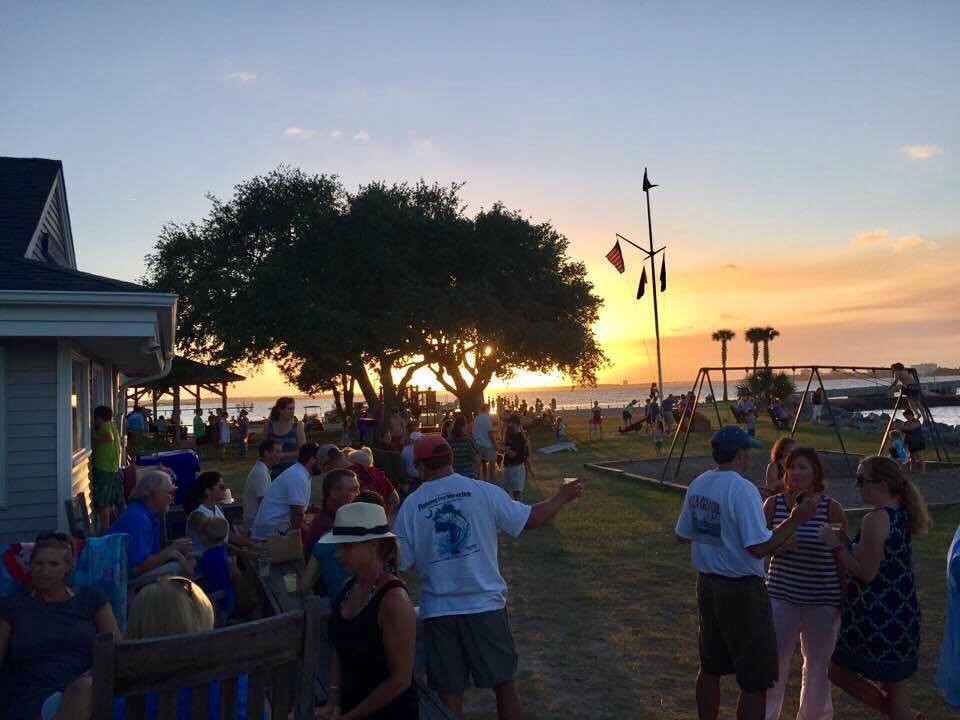
Click here more information of the James Island Yacht Club,
http://www.jiyc.org/
A special thanks to James Island Yacht Club member and friend Ryan Hamm for supplying information on this great club.
Hudson River Community Sailing is Hiring
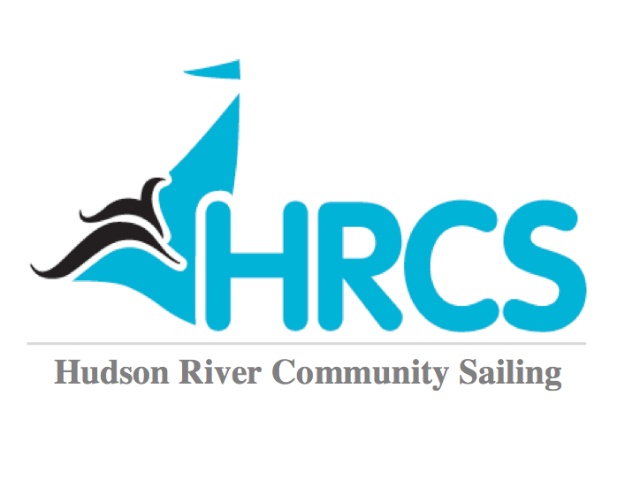
Hudson River Community Sailing develops leadership and academic success in underserved New York City youth through sailing education and provides maritime education and recreation to the community at large.
Hudson River Community Sailing is hiring an Adult Sailing Instructor.
Adult sailing instructors teach sailing to adults aboard our J24 sailboats in New York Harbor. There is a lot of boat traffic and fast currents. The stress is on student participation and student-focused learning. All of our sails are hands-on, and the typical student has zero sailing experience. Your interpersonal skills will be as valuable as your sailing skills.
Club Profile: Severn Sailing Association Jr. Program
SSA Summer Junior Programs – Growing Lifelong Sailors
Severn Sailing Association (Annapolis, Maryland) has a long history of training youth sailors, whether they are just starting out in the Harbor Rookies class or competing at the highest levels of pre-collegiate racing. Thousands got their start at SSA, including alumni who have claimed regional, national, and international titles and awards such as Rolex Yachtsman of the Year.
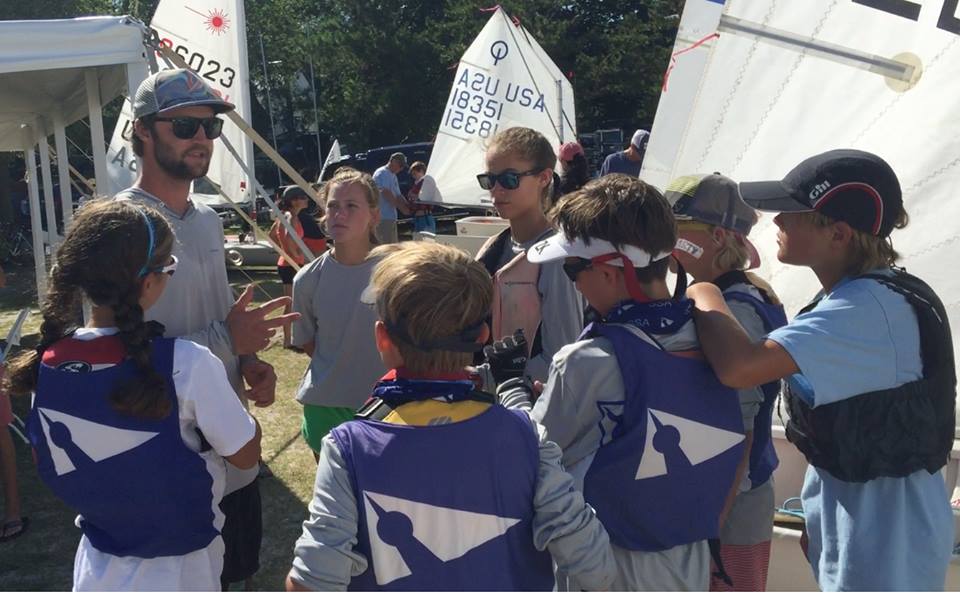
SSA’s 2017 coaching lineup is one of the best ever assembled, consisting of talented men and women whose racing resumes and team affiliations speak for themselves. SSA coaches have years of experience and demonstrated character.
The 2017 coaching staff has an accumulated 55 years in experience coaching and instructing. They have sailed and/or coached in college and have competed in numerous national, international, world championship, and even Olympic regattas.
The majority of SSA summer sailors will be newcomers, and our coaching staff is prepared to deliver the right balance of fun, classroom, and on-water training needed to enjoy the sport and learn fundamental skills. For the more than 300 students, the instructor to sailor ratios are among the best in the region—all 1 to 8 or better.
For the more elite racers, three outstanding coaches were hired for Opti, 420, and Laser travel teams:
- Sam MacKay from New Zealand, a multiple-class champion and member of the Nations Cup-winning team at the 2007 Opti Worlds. For the past seven years, Sam coached Opti sailors to competitive success in Australia, New Zealand, and the United States.
- Carl Evans represented New Zealand at the 2008 Beijing Olympics in the 470 Class and won the 420 World Championship twice, so his credentials for coaching SSA’s 420 Travel Team are superb.
- Conner Blouin, assistant varsity sailing coach at St. Mary’s College and recent Pan Am Games athlete representing the United States in the Sunfish class. Conner has also campaigned his Laser Radial to podium success in recent CORK Olympic Classes regattas, so he will bring relevant and recognized expertise to the Lasers at SSA.
Check out SSA’s 2017 full coaching team line-up.
Whether your child is looking for fun as an adventure sailor or aspiring to be a national champion, come visit SSA and get to know us better.
Because our club is focused on developing sailors, we offer pricing that can work within your budget. Consider joining SSA as a member and receive a 25% discount on program fees, as well as many other benefits.
Click for more information and/or to register before classes fill up.
The Sailing Off-Season is Here: Amp Up Your Workouts Today
In most parts of the country sailing has slowed down for the season. Winter is here meaning less or no sailing for a couple months for most people. Sailing is a unique sport, however, like all other sports we do have our off-season. The off-season is so important to your sports performance, and should be used efficiently to improve your performance out on the water. Sometimes people think of the off-season as a time to take off from your training on the contrary it can be even more important then your in season training.
Why It’s Important:
Off season training for sailing is critical to the improvement of your sailing performance on the water. During this time you can recover from any injuries that may have occurred during the season. It is also a time to deal with muscles imbalances that may cause injury in the future. During the off-season you can increase your strength, power, and speed to help you be unstoppable during the regular sailing season. By doing the work in the off-season you are setting yourself up for better results in the future.
What To Focus on:
During the off-season you need to have goals on what you want to improve with your training routine. Depending on the sport the goals for the off-season will be a little different. For sailing some good goals to focus on are:
1. Increasing Aerobic Capacity: Your aerobic capacity refers to your ability to sustain a certain level of aerobic activity for a certain length of time, also referred to as VO2max. By increasing your aerobic capacity you will be able to last longer on the water. Increasing your aerobic capacity is not only beneficial to your performance in sailing, but everyday health. Your aerobic capacity can be increased by frequently working out, increasing your intensity, training for longer periods, and adding interval training to your routine.
2. Improving Overall Strength: In the off-season we really want to spend time improving are overall strength. We just went through a season using certain muscles everyday or mostly everyday for long periods of time. We now want to focus on improving our body’s overall strength. Strength training is so important to add to your weekly routine, by doing this you will see improvements out on the water.
3. Correct Muscles Imbalances: We all have muscles imbalances that we need to correct. A muscle imbalance occurs when one muscle is stronger then its opposing muscle. For example after a season of hiking our boats flat we may find we have some posture problems. In the off-season we want to spend time fixing these muscles imbalances to help prevent any injury in the future.
The Plan:
Now what’s your plan? Off-season for a sailor can vary depending on several factors, however, typically most sailors will be in off-season at least two to three months a year. So where you can start is to look at the amount of time you have off and make a training plan for those 8-12 weeks. With your training again you want to focus on workouts that are going to increase your aerobic capacity, improve your overall strength, and correct any muscles imbalances you may have. Here is an example of a training plan for a week:
Sunday – Rest/Stretching
Monday – Cardio Workout (HITT workout, running, biking, or swimming)
Tuesday – Full Body Strength Workout
Wednesday – Core Stability Workout
Thursday – Full Body Strength Workout
Friday – Core Endurance Workout
Saturday – Cardio Workout (HITT workout, running, biking, or swimming)
Now check out below and in the video for a full body strength workout to amp up your off-season training routine.
Full Body Strength Workout:
-Warm up with Dynamic Stretching (5 minutes)
Core Activation:
Plank (60 secs)
High Knees (60 secs)
Single Leg Squat (30 secs each side)
Repeat x2
Ski Abs (60 secs)
Side Lunge To Balance (30 secs each side)
Shoulder Taps (60 secs)
Repeat x2
Workout:
Renegade Row (30 secs) —Alternating Shoulder Taps (60 secs)
Switch Kicks (60 secs)
Overhead Tricep Extension (30 secs) — Tricep Dips (60 secs)
Switch Kicks (60 secs)
Repeat 3x w/ 60 secs Rest b/w Sets
Weighted Alternating Lunges (30 seconds) — Forward Lunge W/ Balance (30 secs each side)
Jumping Jacks (60 secs)
Dumbbell Deadlift (30 secs) — Burpees W/ Pushup (60 secs)
Jumping Jacks (60 secs)
Repeat 3x w/ 60 secs Rest b/w Sets
-Cool Down with Foam Rolling and Static Stretching
For more information on fitness for sailing contact [email protected]. Also check out Sailorcise on Facebook, Twitter, and Instagram for daily tips on fitness, nutrition, and sailing.

